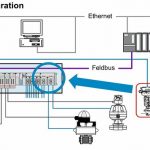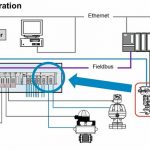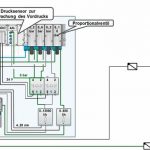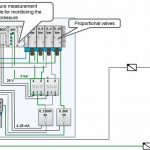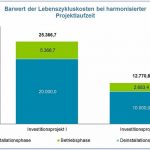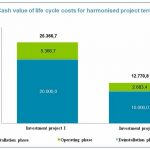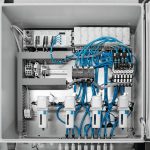New automation products allow function integration to be employed to take a new approach to the automation of familiar process steps, e.g. in biotech and pharmaceutical production. Significant savings can be achieved at the time of initial installation, during modifications and in everyday plant operation. This is due not only to the actual technical equipment used but also to the reduced requirements regarding the essential infrastructure for production operations. The concept developed by a leading pharmaceutical company in collaboration with Festo is an impressive example.
Proportional valves as an interesting alternative
Function integration creates new possibilities
New automation products allow function integration to be employed to take a new approach to the automation of familiar process steps, e.g. in biotech and pharmaceutical production. Significant savings can be achieved at the time of initial installation, during modifications and in everyday plant operation. This is due not only to the actual technical equipment used but also to the reduced requirements regarding the essential infrastructure for production operations. The concept developed by a leading pharmaceutical company in collaboration with Festo is an impressive example.
Tanks, reactors, fermenters, mixers and other process devices in chemical, pharmaceutical or biotech production plants often need to be inertised; other functions, up to and including the transfer of material to downstream processing steps using pressure, need to be implemented, too. The requirements associated with the pressure and flow control equipment are:
- Inertisation, i.e. the complete replacement of the gas volume (unregulated, high flow rate) contained within a reactor
- Pressure blanketing (pressure regulation)
- Pressure relief function in reactors and process tanks within the synthesis process (flow control)
- Material transfer, e.g. to a centrifuge
The task appears all the more complex when you consider that it may need to be carried out for several pressure stages and that several different gases may need to be fed into the plant for various purposes. Traditionally, regulating valves have always been installed directly on the reactor together with the appropriate necessary infrastructure (piping, regulating valves on the reactor, sensors, I/Os in the relevant automation system) in order to obtain the desired function.
Compact and cost-effective
Proportional valve technology represents an interesting alternative for regulating inert gases compared to conventional automation, particularly for modular plants which require decentralised automation structures. The solution previously used consisted of classic regulating valves, flow metres and pressure gauges directly on the reactor in Ex zones 2 or 1.
In the new solution, which was developed in close consultation with the end user, these components are installed decentrally in a control cabinet outside the Ex zone. This has saved valuable space in the cleanroom of the user’s new technical centre. Festo proportional valves are now used instead of the old regulating valves. As each reactor room contains two reactors, one so-called inert gas station was realised for every two reactors to reflect this physical proximity. Each reactor has one valve for argon and two for nitrogen. The first valve type has a pressure range from 0 to 2 bar and the second from 0 to 6 bar. The 0 to 2 bar variant allows more precise regulation with low pressures and flow rates, while the 0 to 6 bar version enables significantly higher flow rates. Depending on the function, it is also possible to connect the two valve types in series for rapid filling followed by precise regulation. This means firstly that the desired accuracy can be guaranteed during pressure blanketing and secondly that sufficiently high flow rates are achieved during inertisation, which requires higher output pressures. In addition, a valve was installed to control the supply pressure for the mixer’s mechanical seal. In many cases, only manually operated pressure regulators are used here.
All components on one backplane
The proportional pressure regulators are integrated into the MPA valve terminal. All the components are installed on a single backplane together with the remote I/O modules, forming the CPX automation platform. The flow sensors are also integrated into the control cabinet and supply their signals directly to the analogue modules of the CPX. Another integral module for pressure sensing measures the primary pressures in the plant section concerned. The proportional valve determines the pressure level directly and generates an error message if the required output pressure is not reached.
This comprehensive monitoring represents a major improvement to the diagnostics options over the previous approach, where only one pressure switch was installed for the entire plant at the central pressure reducer. At the same time, the fact that the functions for two reactors are combined on a single valve terminal means a substantial reduction in purchase and installation costs.
Integration into process control systems
As part of the project, the inert gas stations are connected to a Siemens PCS 7 system. The operator station was designed as a decentralised unit for controlling the two reactors in one reactor room. The proportional valves, valve terminals and I/O modules are installed on a backplane and linked to the master control system via Profinet. Extensive driver libraries are available for integration into the master control system. The rack and module drivers are automatically integrated in the program, and connected to it, by the process control system software. There is no need for the programmer to intervene. Since the driver modules can be downloaded free of charge, the CPX automation platform requires no more configuration than manufacturers’ own remote I/Os.
Added value throughout the life cycle
Thanks to the function integration solution, all the above-mentioned functions, which were traditionally implemented using separate regulating valves as well as pressure and flow rate measurements for individual reactors, are now realised by the inert gas stations described above. The advantages are obvious:
- Fewer remote I/O channels required for control and feedback signals
- More compact design – a considerable advantage in cramped production environments which allows cost savings
- Reduction in the infrastructure needed to supply the plant with different types of gases at different pressure levels
- Improved diagnostics capability for individual components and the overall system
- Lower maintenance costs throughout the service life of the plant owing to the significantly reduced infrastructure requirements (e.g. remote I/Os)
- Improved accessibility of the components in the control cabinet
- Components with small nominal diameters can be connected by tubing instead of piping, with correspondingly lower costs
It is also possible to quantify the savings, for example using the ZVEI tool, in order to compare a function integration solution with alternative technologies in terms of cost effectiveness and financial impact. This Excel based tool can be downloaded free of charge from the ZVEI website and enables the complete service life of a plant and all cost categories, such as personnel, energy and materials, to be mapped. The monetary value of the overall life cycle costs can be determined by means of a parameterisable discounting rate and sensitivity analyses (discounting rate, level of maintenance costs) can equally straightforward.
Conclusion
This example clearly shows the advantages of function integration on the basis of a conservative estimate. This new application allows savings equivalent to up to 50% of the investment costs, depending on the function to be realised. As a general rule, function integration also generates further advantages such as lower maintenance costs and better diagnostics options, thus making the plant easier to manage. This last factor is more difficult to express in monetary terms. The input data required for the tool can easily be adapted to each user’s needs.
www.cpp-net.com search: cpp0315festo
Dr. Eckhard Roos
Dr. Eckhard Roos
Management KAM and Industry Segment Management Process Automation,
Festo
Share:



